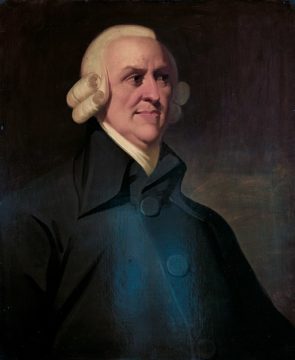From Nature:
 It seemed like a very promising cancer immunotherapy lead. CHO Pharma, in Taiwan, had discovered that it was possible to target solid tumours with an antibody against a cell-surface glycolipid called SSEA-4.1 This antigen is present during embryonic development, but not seen on human cells again — until they turn into cancer cells.2 The company turned to Lan Bo Chen, a recently retired Harvard pathologist, to help develop this work into an anti-cancer therapy for solid tumours. “It is highly reasonable to imagine that we can use SSEA-4, overexpressed on cancer cells, as a target for CAR-T,” says Chen, now in his role as senior technology advisor for CHO Pharma.
It seemed like a very promising cancer immunotherapy lead. CHO Pharma, in Taiwan, had discovered that it was possible to target solid tumours with an antibody against a cell-surface glycolipid called SSEA-4.1 This antigen is present during embryonic development, but not seen on human cells again — until they turn into cancer cells.2 The company turned to Lan Bo Chen, a recently retired Harvard pathologist, to help develop this work into an anti-cancer therapy for solid tumours. “It is highly reasonable to imagine that we can use SSEA-4, overexpressed on cancer cells, as a target for CAR-T,” says Chen, now in his role as senior technology advisor for CHO Pharma.
CAR-T therapy works by genetically engineering a person’s own T cells in such a way that they recognize and attack cancer cells. This involves creating a chimeric antigen receptor (CAR) from an antibody against a target on the cell. But CAR-T therapy was designed for blood cancers so it needs several adaptations to make it suitable for the treatment of solid tumours.3 The cells need to be directed to the site of the tumour, survive in the tumour’s local microenvironment, and act only on tumour cells, not on healthy cells nearby. But, when Chen tried to create CAR-T cells against SSEA-4, he hit a few obstacles. First it took him a long time to get his hands on a humanized SSEA-4 antibody suitable for adaptation. When he finally had one, he still had to find a way to turn that antibody into a CAR. And then to insert the CAR into a human T cell using lentiviral transduction.
More here.

 Eggers is hardly a systems novelist: his literary sensibilities, like his career, tend toward the monomaniacal. His writing in the past two decades has involved a suspiciously prolific series of smug morality tales fictionalizing or nonfictionalizing real people—a heroic Sudanese refugee, a heroic Yemeni coffee importer later accused of racketeering, Donald Trump—as well as novels about loners in perilous circumstances. He has also written children’s books, left-of-center comedic op-eds, and articles for the New Yorker about human rights and how much he loves wine. But evident throughout his literary output, as in his incoherent and self-congratulatory apparatus of publishing programs, bookselling platforms, and children’s literacy programs, is an ongoing fascination with epic, world-conquering ambition. The characters in A Heartbreaking Work of Staggering Genius, I was embarrassed to reread, are “sure that we are on to something epochal . . . sure that we speak for others, that we speak for millions”; in his 2006 foreword to Infinite Jest, Eggers lingers, enviously and, I think, not un-Bezosishly, on Wallace’s all-seeing book as an example of the “human possibility [for] leaps in science and athletics and art and thought.”
Eggers is hardly a systems novelist: his literary sensibilities, like his career, tend toward the monomaniacal. His writing in the past two decades has involved a suspiciously prolific series of smug morality tales fictionalizing or nonfictionalizing real people—a heroic Sudanese refugee, a heroic Yemeni coffee importer later accused of racketeering, Donald Trump—as well as novels about loners in perilous circumstances. He has also written children’s books, left-of-center comedic op-eds, and articles for the New Yorker about human rights and how much he loves wine. But evident throughout his literary output, as in his incoherent and self-congratulatory apparatus of publishing programs, bookselling platforms, and children’s literacy programs, is an ongoing fascination with epic, world-conquering ambition. The characters in A Heartbreaking Work of Staggering Genius, I was embarrassed to reread, are “sure that we are on to something epochal . . . sure that we speak for others, that we speak for millions”; in his 2006 foreword to Infinite Jest, Eggers lingers, enviously and, I think, not un-Bezosishly, on Wallace’s all-seeing book as an example of the “human possibility [for] leaps in science and athletics and art and thought.” Over the Thanksgiving holiday the Financial Times columnist Janan Ganesh
Over the Thanksgiving holiday the Financial Times columnist Janan Ganesh 




 Sughra Raza. Rainy Reflection Self-portrait for 2022.
Sughra Raza. Rainy Reflection Self-portrait for 2022. January, 2022. East End, Long Island, NY. It’s getting colder. I just recovered from a bout with COVID. I am sitting around the fire pit sipping tequila, drinking homemade bone broth from a mug, and watching lists of very important dead people, ripped from various newspapers and magazines, burn in the fire. Life is good.
January, 2022. East End, Long Island, NY. It’s getting colder. I just recovered from a bout with COVID. I am sitting around the fire pit sipping tequila, drinking homemade bone broth from a mug, and watching lists of very important dead people, ripped from various newspapers and magazines, burn in the fire. Life is good. Three things we know about #BLM, two obvious, one a bit more subtle.
Three things we know about #BLM, two obvious, one a bit more subtle.

 2022 is alive, a babe come hale and hollering to join its sisters 2020 and 2021, siblings bound by pandemic. Everybody stood to see off 2022’s older sister 2021, like we all did 2020 before her. Out with the old. Quickly, please.
2022 is alive, a babe come hale and hollering to join its sisters 2020 and 2021, siblings bound by pandemic. Everybody stood to see off 2022’s older sister 2021, like we all did 2020 before her. Out with the old. Quickly, please.
 At my ISI office there were several good economists. Apart from TN, there was B.S. Minhas, Kirit Parikh, Suresh Tendulkar, Sanjit Bose (my friend from MIT days), V.K. Chetty, Dipankar Dasgupta, and others. Of these in many ways the most colorful character was Minhas. A shaved un-turbaned Sikh, he used to tell us about his growing up in a poor farmer family in a Punjab village, where he was the first in his family to go to school. He went to Stanford for doctorate, before returning to India. He relished, a bit too much, his role as the man who spoke the blunt truth to everyone including politicians, policy-makers and academics. He illustrated his Punjabi style by telling the Bengalis that he had heard that in Bengal when a man had a tiff with his wife, he’d go without food rather than eat the food his wife had cooked; he said at home he did quite the opposite: “I go to the fridge, take out my food and eat it; then if I am still upset, I go to the fridge again and take out my wife’s food and eat it all up—serves her right!”
At my ISI office there were several good economists. Apart from TN, there was B.S. Minhas, Kirit Parikh, Suresh Tendulkar, Sanjit Bose (my friend from MIT days), V.K. Chetty, Dipankar Dasgupta, and others. Of these in many ways the most colorful character was Minhas. A shaved un-turbaned Sikh, he used to tell us about his growing up in a poor farmer family in a Punjab village, where he was the first in his family to go to school. He went to Stanford for doctorate, before returning to India. He relished, a bit too much, his role as the man who spoke the blunt truth to everyone including politicians, policy-makers and academics. He illustrated his Punjabi style by telling the Bengalis that he had heard that in Bengal when a man had a tiff with his wife, he’d go without food rather than eat the food his wife had cooked; he said at home he did quite the opposite: “I go to the fridge, take out my food and eat it; then if I am still upset, I go to the fridge again and take out my wife’s food and eat it all up—serves her right!” Of all writers, Fyodor Dostoyevsky is the great artist of obsession. It is not surprising, therefore, that his monumental works—Crime and Punishment, The Possessed, The Idiot, The Brothers Karamazov—are seeded in his shorter works of fiction, as if in embryo. From the wildly romantic and effusive “White Nights” (1848) to the parable-like “Dream of a Ridiculous Man” (1877), these tales explore themes taken up in minute detail in the novels, in which Dostoyevsky’s sense of the tragic predicament of humankind is given its fullest expression: that human beings recognise the good, but succumb to evil; that, though knowing that love is the highest value, they rejoice in their own wickedness, like the “ridiculous man,” a perverse saviour who corrupts the innocent:
Of all writers, Fyodor Dostoyevsky is the great artist of obsession. It is not surprising, therefore, that his monumental works—Crime and Punishment, The Possessed, The Idiot, The Brothers Karamazov—are seeded in his shorter works of fiction, as if in embryo. From the wildly romantic and effusive “White Nights” (1848) to the parable-like “Dream of a Ridiculous Man” (1877), these tales explore themes taken up in minute detail in the novels, in which Dostoyevsky’s sense of the tragic predicament of humankind is given its fullest expression: that human beings recognise the good, but succumb to evil; that, though knowing that love is the highest value, they rejoice in their own wickedness, like the “ridiculous man,” a perverse saviour who corrupts the innocent: The
The